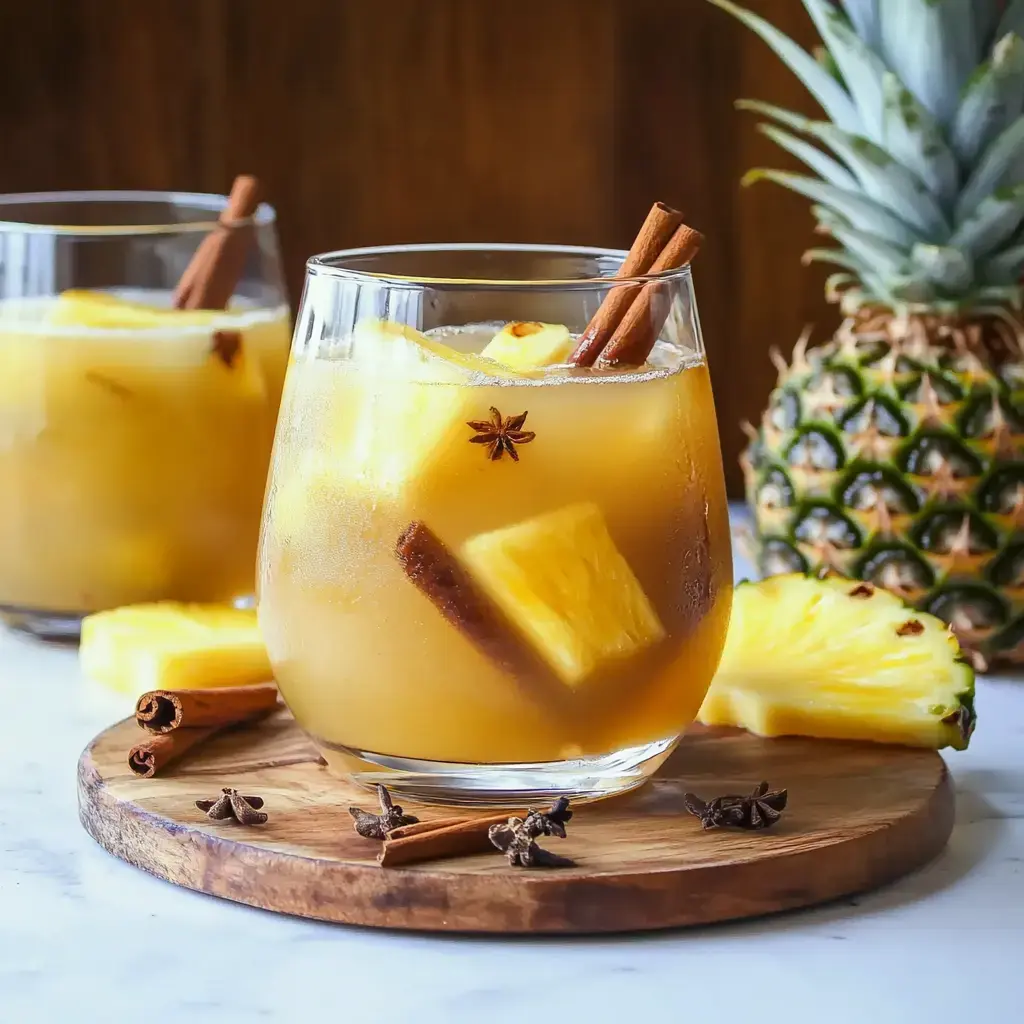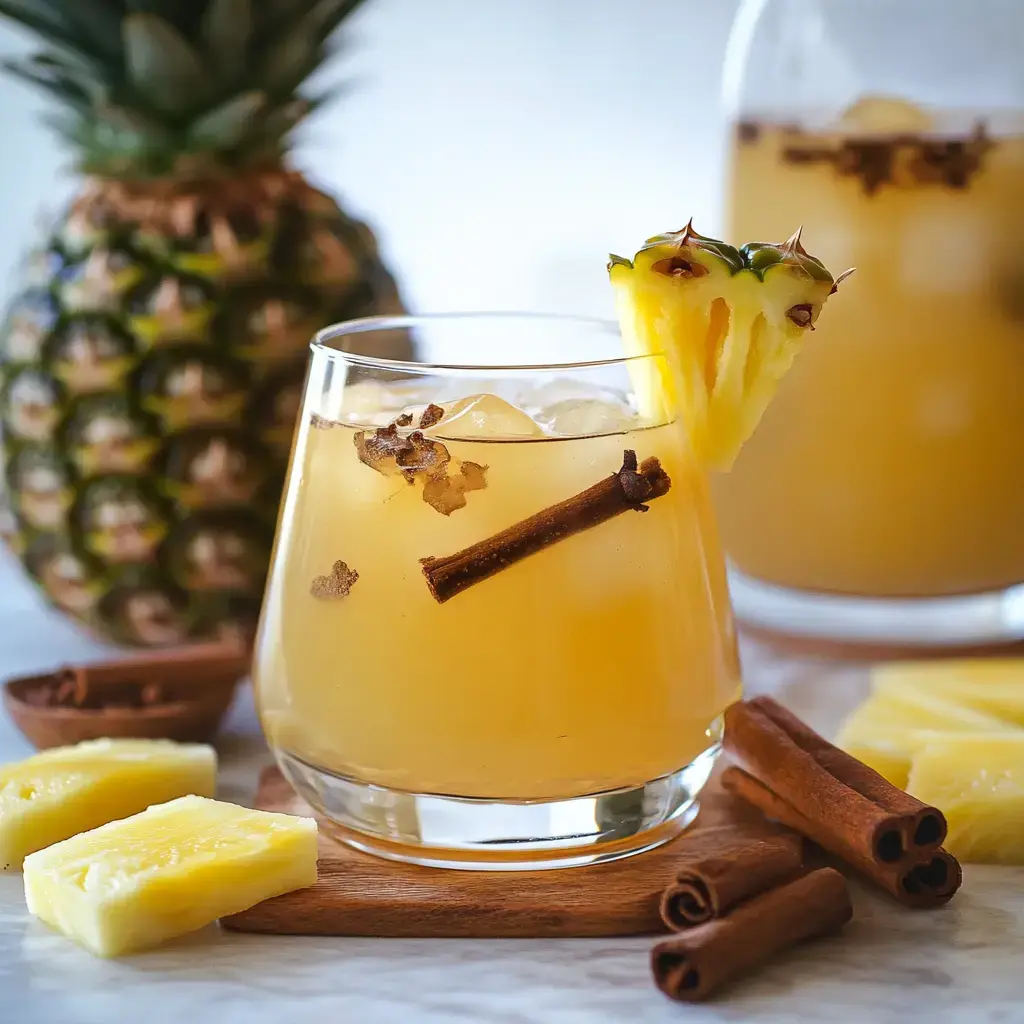 Pin it
Pin it
Let me share my favorite tepache recipe that brings the vibrant flavors of Mexico right to your kitchen. After perfecting this fermented drink I've discovered the secrets to achieving that perfect balance of sweetness and fizz. The way it transforms simple pineapple peels into something so refreshing is absolutely magical.
Zero-Waste Wonder
What makes tepache so special is how it turns what most people throw away into something delicious. The natural fermentation process creates such wonderful complexity and those gentle bubbles make it irresistibly refreshing. My friends are always amazed when they learn it started as just pineapple peels.
What You'll Need
- Fresh pineapple peels and core.
- Traditional piloncillo sugar.
- Warming spices.
- Pure filtered water.
Let's Start Brewing
- Sweet Beginnings
- Create that perfect spiced syrup base.
- Prep with Care
- Clean those pineapple pieces thoroughly.
- Time to Combine
- Mix everything in your fermentation vessel.
- Watch the Magic
- Monitor those beautiful bubbles forming.
- Final Touch
- Strain and chill your finished tepache.
Success Secrets
The key to perfect tepache lies in patience and attention. Watch those bubbles they tell you how your fermentation is progressing. And remember cleanliness is crucial for successful fermentation getting those pineapple peels really clean makes all the difference.
Serve It Fresh
Your tepache is best enjoyed well-chilled over ice. I love serving it on warm afternoons or mixing it into cocktails for a unique twist. Just remember it keeps fermenting even in the fridge so enjoy it while it's at its peak of flavor.
 Pin it
Pin it
Frequently Asked Questions
- → Why use organic pineapple?
- Organic pineapple ensures no pesticides or chemicals interfere with the natural fermentation process.
- → What's the ideal fermentation temperature?
- 70-80°F is ideal. Warmer temperatures speed up fermentation, while cooler ones slow it down.
- → Why remove the foam?
- The white foam is harmless but should be removed for aesthetic purposes. It's a normal part of fermentation.
- → How do I know when it's ready?
- Look for bubbles around the edges and taste for a balance of sweet and sour with light carbonation.
- → Why not use plastic containers?
- Fermentation can react with plastic. Use nonreactive materials like glass, stainless steel, or ceramic.
